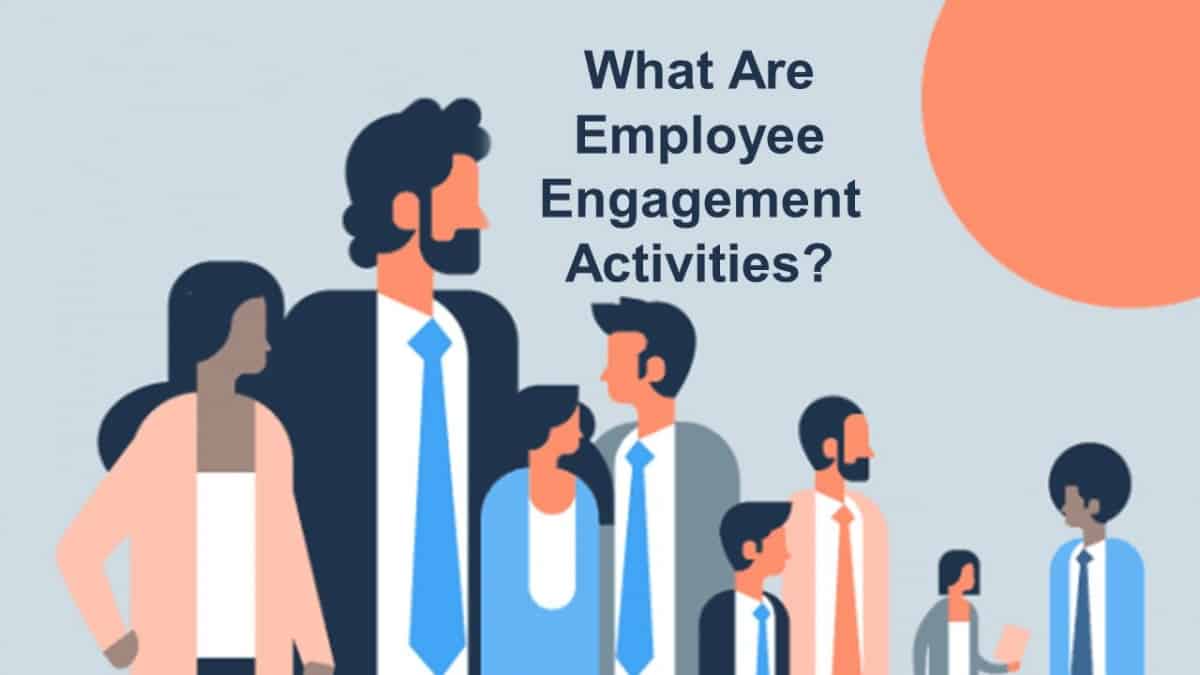Share:
Debra Corey, Contributor

Employee engagement is one of those terms that’s been around for years, being used in many ways by many organizations around the world. In fact, if you google “employee engagement” 936 million results appear!
One of the first companies to measure and report on employee engagement was Gallup, who, in 2000, first shared the staggering statistic that only one in four employees globally were engaged.
Companies reacted by putting in place strategies and programs, and slowly the numbers have risen, peaking in 2019 with 36% of employees saying they were engaged. However, according to their 2022 report, it’s dipped to 32%, reflecting the changes and challenges that businesses and employees have and continue to face.
But why does it matter? Why is there so much focus on this topic? And, why should it matter to you as a leader?
To answer this, let me turn it around by asking you a question—could your team achieve your objectives if you only have a small percentage of your employees engaged? Or, using a commonly referred to analogy, could your boat stay afloat and get you to your destination if only one in four were rowing?
The answer is no, you need the majority of your employees rowing that boat, and being engaged. But how do we implement employee engagement activities that will get everyone in the boat rowing?
Employee engagement activities are activities that increase an employee’s enthusiasm for their work, commitment to the organization, and motivation to help the organization achieve success. When employees are engaged, they perform well, feel a sense of purpose in their work, and are less likely to leave.
To ensure that any engagement activities you pursue in your organization are successful, I’d like to share three important things to understand about employee engagement and some actions you can take to help you improve employee engagement at your company.
I encourage you to work through them and evaluate which you could do better and which you need to start doing going forward to drive the results necessary to help your team and your company succeed.
Understand What Employee Engagement Is (and Isn’t)
Let’s start at the beginning, for you can’t improve something until you fully understand what it is. And although there are many definitions, at its core, employee engagement is all about the relationship and connection between employees and their company.
Engagement drives a business’s success. A high rate of engagement is critical for retention, recruiting top talent, increasing loyalty, satisfying customers, and improving performance.
The main drivers of engagement are leadership, organizational culture, meaningful, purposeful work, opportunities for growth, autonomy, flexibility, recognition, feedback, work/life balance, and an inclusive, positive work environment where employees respect their co-workers.
Engagement impacts so many different aspects of a business. When it’s strong, e.g. when an employee is engaged, it’s what motivates and encourages them to work hard and give their all in good times and in bad, and it’s what drives them to innovate, collaborate, and help themselves and others succeed.
When it’s weak, like in any troubled relationship, problems emerge, mistakes are made, and success is put at risk.
Weak engagement can lead to higher rates of absenteeism, higher rates of turnover, decreased productivity, poor performance, lower customer satisfaction and customer retention, and decreased profitability for the business.
Taking this definition to the next level, let me share a results-focused definition of what an engaged employee is from my book Build it: The Rebel Playbook for Employee Engagement.
An engaged employee. . .
- Understands and believes in the direction the company is going by embracing and using your company’s mission, objectives, and values to give them direction and purpose.
- Understands how their role affects and contributes to the company, helping them clearly see how they fit in, how they make a difference, and how their decisions and actions fit into the bigger picture.
- Genuinely wants the company to succeed, using this to motivate them to put in the effort to drive results.
- Believes the company cares for them, taking into consideration their needs and supporting them to be their best self.
You’ll notice that in these definitions, I never used the word “happiness,” to avoid implying that an engaged employee is a happy one. Although it commonly occurs, I’ve seen firsthand that just because someone is happy, it does not mean that they are engaged.
To explain this, let me ask you a question—have you ever had a rough day, one where you were far from happy? The obvious answer is yes, for we all have these.
However, just because this happens, it doesn’t automatically move you from engaged to disengaged, because, as explained previously, it is something more core to how you feel, and the relationship and connection that you have.
Action: Evaluate what you’re doing to ensure that the four parts of the definition are taking place.
For example, does your team fully understand your company’s mission, objectives, and values, and, at the same time, understand what they personally need to do and how they can drive them? Are you providing support to your people to show them that you care?
Develop a plan so that these things are being done over and over again.
Understand Your Role as a Leader
The next thing to understand is your role as a leader or manager when it comes to employee engagement.
You may be thinking that your role is a supporting one, but as a Gallup study found, managers account for at least 70% of the variance in employee engagement scores.
About 50-70% of a worker’s perception of their workplace is linked to the actions and behaviors of leadership, and the length of time they stay in that workplace is primarily determined by the relationship they have with their direct supervisor. Meaning, one of the biggest factors that drive workers to quit their jobs is the behavior of their immediate supervisor.
And yet research shows that only 26% of managers think employee engagement is an essential part of their roles. This means most managers don’t consider the important role they play in engaging employees when working on engagement strategies. No wonder engagement levels are so low!
What does this mean for an organization’s engagement activities?
This means that no matter what initiatives and programs are put in place across the business, they have little to no effect without the support and ownership of strong leaders and managers.
We often talk about employee engagement, but leader engagement is just as important to building employee engagement. If a leader isn’t truly engaged in the process of engaging employees, engagement initiatives will fall flat.
When there is a disconnect between the stated initiatives and a leader’s commitment to implementing them and forging real connections with employees, you will see the effects in the form of disengagement and high turnover rates.
So, the bottom line is, you have a starring role when it comes to the engagement of your employees.
Action: As the owner of employee engagement for your employees, the most important action is to make it a priority. And, like any other priority, this means putting in place a strategy and plan as to how you will own it and then putting in the time and effort to work on it.
Add it to your goals, develop concrete objectives, and do what it takes to make sure it is a top priority and doesn’t fall to the bottom of your list.
As you implement your strategy, always be aware of the important roles leaders play in communicating culture and core values to employees. Getting employees on board with the organization’s culture and vision is essential to building engagement and should be a part of your engagement strategy.
In all your interactions with employees, be mindful of how important it is to make sure that you are modeling core values so that you are reinforcing more of the behaviors you want to see.
This will help you build and maintain trusting, authentic relationships with your team members, which are conducive to high engagement, high performance, and high retention, and maintain a more positive work environment where morale is high and toxic behaviors are unacceptable.
Understand What Your Employees Want and Need
In order to drive and maintain employee engagement, it’s absolutely critical to understand your employees and know what they want and need.
It may seem obvious, but too often managers don’t ask and don’t listen when it comes to understanding the unique and diverse needs of their employees. And when this happens, you risk focusing on the wrong things and missing out on employee engagement and business objectives.
According to Jack Zenger, CEO of Zenger/Folkman, certain behaviors have been found to differentiate good leaders from bad leaders. And since leadership has such a profound impact on engagement and the employee experience, poor leadership can result in high turnover.
Zenger says these eight behaviors can hurt engagement and increase turnover significantly:
- Failure to stay in touch with issues and concerns of direct reports.
- Focus primarily on pushing direct reports to deliver on commitments with little pull.
- Lack of trust.
- Competition between co-workers rather than cooperation.
- Manager is a poor role model.
- Little emphasis on development and personal improvement.
- Fails to provide others with a sense of direction and purpose.
- Ignoring diverse perspectives and talents of team members.
These behaviors are the result of leaders failing to understand what their team members need most to remain engaged. To engage and retain talented employees, leaders need to avoid these behaviors.
Action: Fostering a culture of feedback can help you avoid these behaviors.
Ensuring that you are providing feedback to your team members on a regular basis, and encouraging team members to provide feedback to you regularly so that you can improve how you lead, is crucial to engaging your team and keeping them engaged.
Find opportunities, and take the time to listen to your people, to have a pulse on who they are and what they need.
For example, as part of your annual and quarterly performance meetings, build in time to find out what employees are working toward and what is important to them.
Are they motivated by development, learning more, and getting to the next job level? Is it being recognized that drives them to succeed, knowing that they’re valued and appreciated for their contributions? Is it flexibility and being able to manage where and how they get their work done that matters most?
Do your team members feel a sense of belonging in the organization and a sense of purpose in the work they do? Do you do a good job of showing them the deeper meaning of the work they do, beyond their day-to-day responsibilities and tasks?
Start by understanding. Then build this into your ways of working with them, and make sure it informs how you’ll deliver on the things that matter to them and motivate them the most.
And since things can often change, keep the dialogue going by using your weekly or biweekly update meetings to understand if/how their needs or goals have changed. Ask them how they’re doing, what support they need from you, and if anything has changed since you spoke last.
Really listen to them, hearing any and all cues they may be sending to you so that you can address them and use them as part of your engagement strategy and approach.
The key and starting point to driving employee engagement is understanding. For, as Albert Einstein said, “Any fool can know. The point is to understand.”
Take the time to understand all that you can about employee engagement and your employees, and then understand how you can do what’s necessary to have a boat full of engaged “rowers.” Do this, and you’ll successfully make it to your destination.

Debra Corey is a highly experienced and award-winning HR leader, world-class speaker, consultant, and four-time author who has been named as one of the top 101 global employee engagement influencers. She’s had a varied career, working for global companies such as Gap Inc., Quintiles, Merlin Entertainments, and Reward Gateway, where she developed and delivered HR strategies in a rebellious way, pushing the boundaries and challenging the status quo to truly drive employee engagement. She now acts as the Chief Pay It Forward Officer at DebCo HR, where she inspires and works with others to bring out their inner rebel and drive cultural and business change through employee engagement.


